#solar power experts
Explore tagged Tumblr posts
Text

Durkin Gate Automation
With over 5 years experience in the industry and over 10 years in fabrication and electrical systems. Brady has an eye for detail and ensures customer satisfaction is at the forefront what we do. Previous to Durkin Gate Automation Brady completed a 1st Class Masters Degree in Chemical Engineering. With a love for engineering from a young age.
#domestic gate solutions#sustainable solar gates#commercial gate installation services#gate servicing experts#solar powered gates.
0 notes
Text
Affordable Solar Energy Sydney What You Need to Know
Whether you want to save money on electricity costs or play a role in combating climate change, solar energy is a smart option. In Australia, homeowners can access government incentives and financing options that make solar power more affordable.
However, it is important to do your research before choosing a solar installer. Unusually low prices may indicate the use of low-quality components that will impact system performance and lifespan.
No Net Cost
With numerous government incentives and financing options, affordable solar energy Sydney offers homeowners a cost-effective solution to rising electricity costs. Typically, homeowners can save up to 80% on their electricity bills and even eliminate them altogether. In addition, solar systems can help reduce carbon footprints and add value to properties.
The size of your solar system will determine how much you save on energy bills, and how quickly you can pay off your investment. The best choice depends on your household’s energy consumption, roof orientation, and other factors such as shading.
If you’re considering solar power, look for a provider that can provide detailed calculations and advice on the right size of system for your home. Also, look for a company that can offer excellent workmanship and customer service.
Government Rebates
The NSW government offers a number of rebates for solar power systems. The eligibility criteria vary by system size and location. For example, a household with a pensioner concession card or Department of Veterans’ Affairs gold card can receive a free 3-kilowatt solar system.
This rebate is designed to help low-income households save money on electricity costs by reducing their reliance on the grid. It also helps alleviate the financial strain of rising energy prices.
The national solar subsidy is a great way to reduce the upfront cost of a 6.6kW system by up to $2,300! This rebate is offered by the Clean Energy Council and requires your system to be installed by a CEC accredited installer. It also must use CEC-approved components and meet safety standards.
Low-interest Loans
While the upfront cost of Solar energy Sydney systems can seem high, it is often easier than you think to pay for them with a green loan. Many banks and lenders offer lowinterest loans that allow you to save money on your energy bills, while contributing towards a cleaner environment.
Many government incentives, rebates and financing options make transitioning to solar power more affordable for Sydney residents. This includes the Small-scale Renewable Energy Scheme (SRES) and solar feed-in tariffs offered at a state level.
Low-interest loans are also available through organisations like Parker Lane, Brighte Finance and Plenti. These offer a seamless financing experience, quick approvals and personalised loan terms that suit your budget. They also offer $0 upfront options so that you can start saving on your electricity bills sooner.
Green Loans
Green loans are financial products that can be used to finance eco-friendly projects, such as solar panels, home battery systems or double-glazed windows. They often offer lower interest rates than personal loans and credit cards, making them a costeffective way to fund sustainable upgrades.
A solar green loan can be a great option for Australian homeowners who want to finance the upfront costs of their solar energy system. These loans typically feature low interest rates that are comparable to traditional home loan rates, allowing borrowers to make affordable repayments.
A favourable rate on a solar and battery system can help make the investment cash flow positive from day one, so you’ll be saving money immediately. 1KOMMA5deg partners with Plenti to provide Australian homeowners with access to competitive and flexible solar financing options.
Reputable Installers
The reputation of installers is an important factor to consider when choosing a solar energy system for your home. Look for testimonials from past clients and contact potential installers to ask questions. Ensure they have valid certifications and any roofing or electrical licenses needed for the work you need done. It is also a good idea to have your final two or three installer choices visit your home and survey the size of the system you are considering.
Solar energy costs are at an all-time low and government rebates can significantly reduce upfront installation fees. A 6.6kW system can generate around 20 kilowatthours per day in Sydney, providing a strong return on investment for homeowners.
This is especially true with electricity prices increasing nationwide.
#Local solar experts in Sydney#Local solar experts Sydney#Eco-friendly energy solutions Sydney#Eco-friendly solar power Sydney#Affordable solar energy Sydney
0 notes
Text
Genocide experts warn that India is about to genocide the Shompen people
Who are the Shompen?
The Shompen are an indigenous culture that lives in the Great Nicobar Island, which is nowadays owned by India. The Shompen and their ancestors are believed to have been living in this island for around 10,000 years. Like other tribes in the nearby islands, the Shompen are isolated from the rest of the world, as they chose to be left alone, with the exception of a few members who occasionally take part in exchanges with foreigners and go on quarantine before returning to their tribe. There are between 100 and 400 Shompen people, who are hunter-gatherers and nomadic agricultors and rely on their island's rainforest for survival.
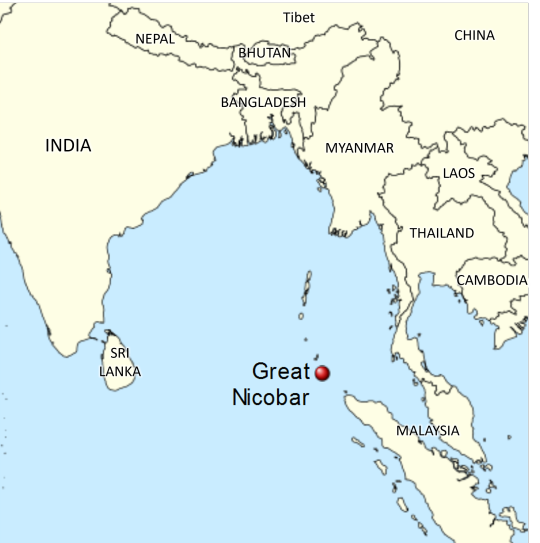
Why is there risk of genocide?
India has announced a huge construction mega-project that will completely change the Great Nicobar Island to turn it into "the Hong Kong of India".
Nowadays, the island has 8,500 inhabitants, and over 95% of its surface is made up of national parks, protected forests and tribal reserve areas. Much of the island is covered by the Great Nicobar Biosphere Reserve, described by UNESCO as covering “unique and threatened tropical evergreen forest ecosystems. It is home to very rich ecosystems, including 650 species of angiosperms, ferns, gymnosperms, and bryophytes, among others. In terms of fauna, there are over 1800 species, some of which are endemic to this area. It has one of the best-preserved tropical rain forests in the world.”
The Indian project aims to destroy this natural environment to create an international shipping terminal with the capacity to handle 14.2 million TEUs (unit of cargo capacity), an international airport that will handle a peak hour traffic of 4,000 passengers and that will be used as a joint civilian-military airport under the control of the Indian Navy, a gas and solar power plant, a military base, an industrial park, and townships aimed at bringing in tourism, including commercial, industrial and residential zones as well as other tourism-related activities.
This project means the destruction of the island's pristine rainforests, as it involves cutting down over 852,000 trees and endangers the local fauna such as leatherback turtles, saltwater crocodiles, Nicobar crab-eating macaque and migratory birds. The erosion resulting from deforestation will be huge in this highly-seismic area. Experts also warn about the effects that this project will have on local flora and fauna as a result of pollution from the terminal project, coastal surface runoff, ballasts from ships, physical collisions with ships, coastal construction, oil spills, etc.
The indigenous people are not only affected because their environment and food source will be destroyed. On top of this, the demographic change will be a catastrophe for them. After the creation of this project, the Great Nicobar Island -which now has 8,500 inhabitants- will receive a population of 650,000 settlers. Remember that the Shompen and Nicobarese people who live on this island are isolated, which means they do not have an immune system that can resist outsider illnesses. Academics believe they could die of disease if they come in contact with outsiders (think of the arrival of Europeans to the Americas after Christopher Columbus and the way that common European illnesses were lethal for indigenous Americans with no immunization against them).
And on top of all of this, the project might destroy the environment and the indigenous people just to turn out to be useless and sooner or later be abandoned. The naturalist Uday Mondal explains that “after all the destruction, the financial viability of the project remains questionable as all the construction material will have to be shipped to this remote island and it will have to compete with already well-established ports.” However, this project is important to India because they want to use the island as a military and commercial post to stop China's expansion in the region, since the Nicobar islands are located on one of the world's busiest sea routes.
Last year, 70 former government officials and ambassadors wrote to the Indian president saying the project would “virtually destroy the unique ecology of this island and the habitat of vulnerable tribal groups”. India's response has been to say that the indigenous tribes will be relocated "if needed", but that doesn't solve the problem. As a spokesperson for human rights group Survival International said: “The Shompen are nomadic and have clearly defined territories. Four of their semi-permanent settlements are set to be directly devastated by the project, along with their southern hunting and foraging territories. The Shompen will undoubtedly try to move away from the area destroyed, but there will be little space for them to go. To avoid a genocide, this deadly mega-project must be scrapped.”
On 7 February 2024, 39 scholars from 13 countries published an open letter to the Indian president warning that “If the project goes ahead, even in a limited form, we believe it will be a death sentence for the Shompen, tantamount to the international crime of genocide.”
How to help
The NGO Survival International has launched this campaign:
From this site, you just need to add your name and email and you will send an email to India's Tribal Affairs Minister and to the companies currently vying to build the first stage of the project.
Share it with your friends and acquittances and on social media.
Sources:
India’s plan for untouched Nicobar isles will be ‘death sentence’ for isolated tribe, 7 Feb 2024. The Guardian.
‘It will destroy them’: Indian mega-development could cause ‘genocide’ and ‘ecocide’, says charity, 8 Feb 2024. Geographical.
Genocide experts call on India's government to scrap the Great Nicobar mega-project, Feb 2024. Survival International.
The container terminal that could sink the Great Nicobar Island, 20 July 2022. Mongabay.
[Maps] Environmental path cleared for Great Nicobar mega project, 10 Oct 2022. Mongabay.
#shompen#genocide#stop genocide#india#indigenous#indigenous peoples#indigenous rights#human rights#anthropology#stateless nations#end occupation#andaman and nicobar islands#nicobar islands#great nicobar#💬#asia#geopolitics#ecocide#sustainability
23K notes
·
View notes
Text
RVS College Hosts Solar Power FDP with NIT Jamshedpur Expert
Prof. Dr. Simanta Kumar Samal discusses advancements in solar PV technology RVS College of Engineering and Technology launched a week-long faculty development program focusing on solar power innovations. JAMSHEDPUR – RVS College of Engineering and Technology began a seven-day faculty development program, featuring NIT Jamshedpur’s Prof. Dr. Simanta Kumar Samal discussing solar PV power…
#शिक्षा#education#engineering college initiatives#Jamshedpur renewable energy focus#NIT Jamshedpur expert lecture#photovoltaic advancements#Prof. Dr. Simanta Kumar Samal#renewable energy technology#RVS College faculty development#solar power education#solar PV power processing#sustainable energy education
0 notes
Text
25 Years of Exploring the Universe with NASA's Chandra Xray Observatory

Illustration of the Chandra telescope in orbit around Earth. Credit: NASA/CXC & J. Vaughan
On July 23, 1999, the space shuttle Columbia launched into orbit carrying NASA’s Chandra X-ray Observatory. August 26 marked 25 years since Chandra released its first images.
These were the first of more than 25,000 observations Chandra has taken. This year, as NASA celebrates the 25th anniversary of this telescope and the incredible data it has provided, we’re taking a peek at some of its most memorable moments.
About the Spacecraft
The Chandra telescope system uses four specialized mirrors to observe X-ray emissions across the universe. X-rays that strike a “regular” mirror head on will be absorbed, so Chandra’s mirrors are shaped like barrels and precisely constructed. The rest of the spacecraft system provides the support structure and environment necessary for the telescope and the science instruments to work as an observatory. To provide motion to the observatory, Chandra has two different sets of thrusters. To control the temperatures of critical components, Chandra's thermal control system consists of a cooling radiator, insulators, heaters, and thermostats. Chandra's electrical power comes from its solar arrays.
Learn more about the spacecraft's components that were developed and tested at NASA’s Marshall Space Flight Center in Huntsville, Alabama. Fun fact: If the state of Colorado were as smooth as the surface of the Chandra X-ray Observatory mirrors, Pike's Peak would be less than an inch tall.
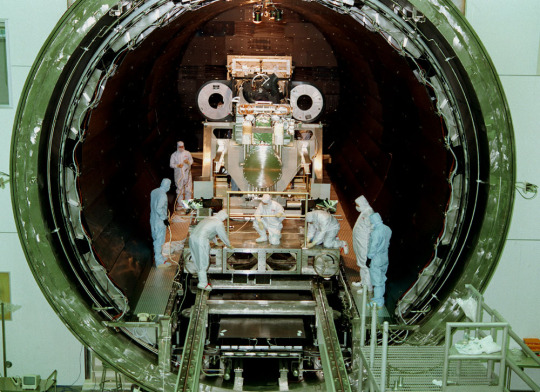
Engineers in the X-ray Calibration Facility at NASA’s Marshall Space Flight Center in Huntsville, Alabama, integrating the Chandra X-ray Observatory’s High-Resolution Camera with the mirror assembly, in this photo taken March 16, 1997. Credit: NASA
Launch
When space shuttle Columbia launched on July 23, 1999, Chandra was the heaviest and largest payload ever launched by the shuttle. Under the command of Col. Eileen Collins, Columbia lifted off the launch pad at NASA’s Kennedy Space Center in Florida. Chandra was deployed on the mission’s first day.

Reflected in the waters, space shuttle Columbia rockets into the night sky from Launch Pad 39-B on mission STS-93 from Kennedy Space Center. Credit: NASA
First Light Images
Just 34 days after launch, extraordinary first images from our Chandra X-ray Observatory were released. The image of supernova remnant Cassiopeia A traces the aftermath of a gigantic stellar explosion in such captivating detail that scientists can see evidence of what is likely the neutron star.
“We see the collision of the debris from the exploded star with the matter around it, we see shock waves rushing into interstellar space at millions of miles per hour,” said Harvey Tananbaum, founding Director of the Chandra X-ray Center at the Smithsonian Astrophysical Observatory.

Cassiopeia A is the remnant of a star that exploded about 300 years ago. The X-ray image shows an expanding shell of hot gas produced by the explosion colored in bright orange and yellows. Credit: NASA/CXC/SAO
A New Look at the Universe
NASA released 25 never-before-seen views to celebrate the telescopes 25th anniversary. This collection contains different types of objects in space and includes a new look at Cassiopeia A. Here the supernova remnant is seen with a quarter-century worth of Chandra observations (blue) plus recent views from NASA’s James Webb Space Telescope (grey and gold).
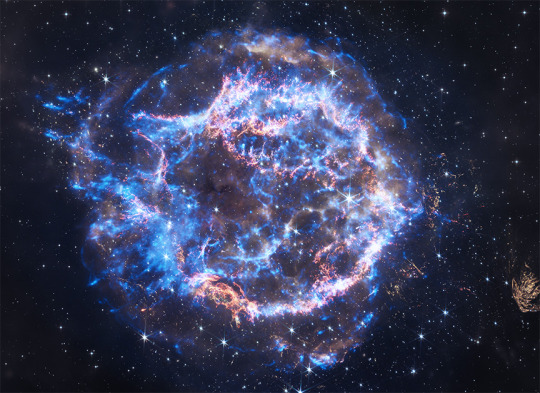
This image features deep data of the Cassiopeia A supernova, an expanding ball of matter and energy ejected from an exploding star in blues, greys and golds. The Cassiopeia A supernova remnant has been observed for over 2 million seconds since the start of Chandra’s mission in 1999 and has also recently been viewed by the James Webb Space Telescope. Credit: NASA/CXC/SAO
Can You Hear Me Now?
In 2020, experts at the Chandra X-ray Center/Smithsonian Astrophysical Observatory (SAO) and SYSTEM Sounds began the first ongoing, sustained effort at NASA to “sonify” (turn into sound) astronomical data. Data from NASA observatories such as Chandra, the Hubble Space Telescope, and the James Webb Space Telescope, has been translated into frequencies that can be heard by the human ear.
SAO Research shows that sonifications help many types of learners – especially those who are low-vision or blind -- engage with and enjoy astronomical data more.
Click to watch the “Listen to the Universe” documentary on NASA+ that explores our sonification work: Listen to the Universe | NASA+
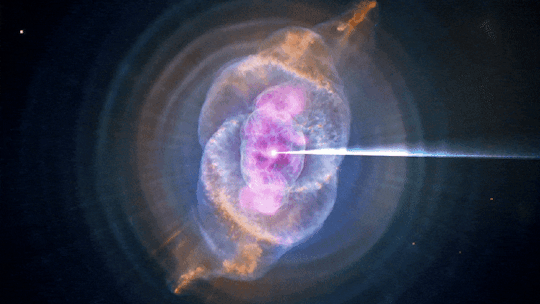
An image of the striking croissant-shaped planetary nebula called the Cat’s Eye, with data from the Chandra X-ray Observatory and Hubble Space Telescope. NASA’s Data sonification from Chandra, Hubble and/or Webb telecopes allows us to hear data of cosmic objects. Credit: NASA/CXO/SAO
Celebrate With Us!
Dedicated teams of engineers, designers, test technicians, and analysts at Marshall Space Flight Center in Huntsville, Alabama, are celebrating with partners at the Chandra X-ray Center and elsewhere outside and across the agency for the 25th anniversary of the Chandra X-ray Observatory. Their hard work keeps the spacecraft flying, enabling Chandra’s ongoing studies of black holes, supernovae, dark matter, and more.
Chandra will continue its mission to deepen our understanding of the origin and evolution of the cosmos, helping all of us explore the Universe.
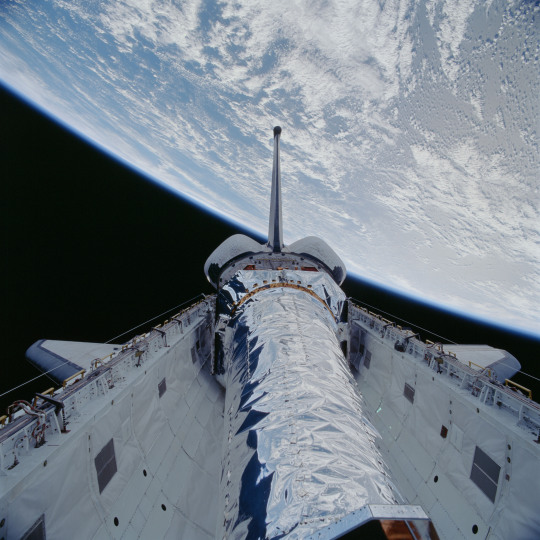
The Chandra Xray Observatory, the longest cargo ever carried to space aboard the space shuttle, is shown in Columbia’s payload bay. This photo of the payload bay with its doors open was taken just before Chandra was tilted upward for release and deployed on July 23, 1999. Credit: NASA
Make sure to follow us on Tumblr for your regular dose of space: http://nasa.tumblr.com
2K notes
·
View notes
Text
Masterpost: Reasons I firmly believe we will beat climate change
Posts are in reverse chronological order (by post date, not article date), mostly taken from my "climate change" tag, which I went through all the way back to the literal beginning of my blog. Will update periodically.
Especially big deal articles/posts are in bold.
Big picture:
Mature trees offer hope in world of rising emissions (x)
Spying from space: How satellites can help identify and rein in a potent climate pollutant (x)
Good news: Tiny urban green spaces can cool cities and save lives (x)
Conservation and economic development go hand in hand, more often than expected (x)
The exponential growth of solar power will change the world (x)
Sun Machines: Solar, an energy that gets cheaper and cheaper, is going to be huge (x)
Wealthy nations finally deliver promised climate aid, as calls for more equitable funding for poor countries grow (x)
For Earth Day 2024, experts are spreading optimism – not doom. Here's why. (x)
Opinion: I’m a Climate Scientist. I’m Not Screaming Into the Void Anymore. (x)
The World’s Forests Are Doing Much Better Than We Think (x)
‘Staggering’ green growth gives hope for 1.5C, says global energy chief (x)
Beyond Catastrophe: A New Climate Reality Is Coming Into View (x)
Young Forests Capture Carbon Quicker than Previously Thought (x)
Yes, climate change can be beaten by 2050. Here's how. (x)
Soil improvements could keep planet within 1.5C heating target, research shows (x)
The global treaty to save the ozone layer has also slowed Arctic ice melt (x)
The doomers are wrong about humanity’s future — and its past (x)
Scientists Find Methane is Actually Offsetting 30% of its Own Heating Effect on Planet (x)
Are debt-for-climate swaps finally taking off? (x)
High seas treaty: historic deal to protect international waters finally reached at UN (x)
How Could Positive ‘Tipping Points’ Accelerate Climate Action? (x)
Specific examples:
Environmental Campaigners Celebrate As Labour Ends Tory Ban On New Onshore Wind Projects (x)
Private firms are driving a revolution in solar power in Africa (x)
How the small Pacific island nation of Vanuatu drastically cut plastic pollution (x)
Rewilding sites have seen 400% increase in jobs since 2008, research finds [Scotland] (x)
The American Climate Corps take flight, with most jobs based in the West (x)
Waste Heat Generated from Electronics to Warm Finnish City in Winter Thanks to Groundbreaking Thermal Energy Project (x)
Climate protection is now a human right — and lawsuits will follow [European Union] (x)
A new EU ecocide law ‘marks the end of impunity for environmental criminals’ (x)
Solar hits a renewable energy milestone not seen since WWII [United States] (x)
These are the climate grannies. They’ll do whatever it takes to protect their grandchildren. [United States and Native American Nations] (x)
Century of Tree Planting Stalls the Warming Effects in the Eastern United States, Says Study (x)
Chart: Wind and solar are closing in on fossil fuels in the EU (x)
UK use of gas and coal for electricity at lowest since 1957, figures show (x)
Countries That Generate 100% Renewable Energy Electricity (x)
Indigenous advocacy leads to largest dam removal project in US history [United States and Native American Nations] (x)
India’s clean energy transition is rapidly underway, benefiting the entire world (x)
China is set to shatter its wind and solar target five years early, new report finds (x)
‘Game changing’: spate of US lawsuits calls big oil to account for climate crisis (x)
Largest-ever data set collection shows how coral reefs can survive climate change (x)
The Biggest Climate Bill of Your Life - But What Does It DO? [United States] (x)
Good Climate News: Headline Roundup April 1st through April 15th, 2023 (x)
How agroforestry can restore degraded lands and provide income in the Amazon (x) [Brazil]
Loss of Climate-Crucial Mangrove Forests Has Slowed to Near-Negligable Amount Worldwide, Report Hails (x)
Agroecology schools help communities restore degraded land in Guatemala (x)
Climate adaptation:
Solar-powered generators pull clean drinking water 'from thin air,' aiding communities in need: 'It transforms lives' (x)
‘Sponge’ Cities Combat Urban Flooding by Letting Nature Do the Work [China] (x)
Indian Engineers Tackle Water Shortages with Star Wars Tech in Kerala (x)
A green roof or rooftop solar? You can combine them in a biosolar roof — boosting both biodiversity and power output (x)
Global death tolls from natural disasters have actually plummeted over the last century (x)
Los Angeles Just Proved How Spongy a City Can Be (x)
This city turns sewage into drinking water in 24 hours. The concept is catching on [Namibia] (x)
Plants teach their offspring how to adapt to climate change, scientists find (x)
Resurrecting Climate-Resilient Rice in India (x)
Other Masterposts:
Going carbon negative and how we're going to fix global heating (x)
#climate change#climate crisis#climate action#climate emergency#climate anxiety#climate solutions#fossil fuels#pollution#carbon emissions#solar power#wind power#trees#forests#tree planting#biodiversity#natural disasters#renewables#renewable electricity#united states#china#india#indigenous nations#european union#plant biology#brazil#uk#vanuatu#scotland#england#methane
2K notes
·
View notes
Text
[ABC is Australian State Media]
While Australia debates the merits of going nuclear and frustration grows over the slower-than-needed rollout of solar and wind power, China is going all in on renewables.
New figures show the pace of its clean energy transition is roughly the equivalent of installing five large-scale nuclear power plants worth of renewables every week.
A report by Sydney-based think tank Climate Energy Finance (CEF) said China was installing renewables so rapidly it would meet its end-of-2030 target by the end of this month — or 6.5 years early.
It's installing at least 10 gigawatts of wind and solar generation capacity every fortnight.
By comparison, experts have said the Coalition's plan to build seven nuclear power plants would add fewer than 10GW of generation capacity to the grid sometime after 2035.[...]
Smart Energy Council CEO John Grimes, who recently returned from a Shanghai energy conference, said China has decarbonised its grid almost as quickly as Australia, despite having a much harder task due to the scale of its energy demand.
"They have clear targets and every part of their government is harnessed to deliver the plan," he said.
China accounts for about a third of the world's greenhouse gas emissions. A recent drop in emissions (the first since relaxing COVID-19 restrictions), combined with the decarbonisation of the power grid, may mean the country's emissions have peaked.
"With the power sector going green, emissions are set to plateau and then progressively fall towards 2030 and beyond," CEF China energy policy analyst Xuyang Dong said.[...]
The world's largest solar and wind farms are being built on the western edge of the country and connected to the east via the world's longest high-voltage transmission lines.[...]
Renewables have a "capacity factor" (the ratio of actual output to maximum potential generation) of about 25 per cent, whereas nuclear's is as high as 90 per cent.
So although China is installing solar and wind generation equivalent to five large nuclear power plants per week, their output is closer to one nuclear plant per week.[...]
To "firm" or stabilise the supply of power from its renewable energy zones, China is using a mix of pumped hydro and battery storage, similar to Australia.
"They're installing 1GW per month of pumped hydro storage," Mr Buckley said.
"We're struggling to build the 2GW Snowy 2.0 in 10 years."[...]
The China Energy Council estimated renewables generation would overtake coal by the end of this year.
The CEF's Xuyang Dong said despite the country's reliance on coal, "having China go green at this speed and scale provides the world with a textbook to do the same".[...]
"In China they decide they're going to do something and then they go and do it."
15 Jul 24
767 notes
·
View notes
Text
Things to Do that Aren't Related to Growing Plants
This is my second post in a series I’ll be making on how to increase biodiversity on a budget! I’m not an expert--just an enthusiast--but I hope something you find here helps!
Some of us just don’t have much luck when it comes to growing plants. Some of us simply want to aim for other ways to help that don’t involve putting on gardening gloves. Maybe you've already got a garden, but you want to do more. No problem! There’s a couple of options you can look into that’ll help attract wildlife in your area without even having to bring out any shovels!
Provide a Water Source
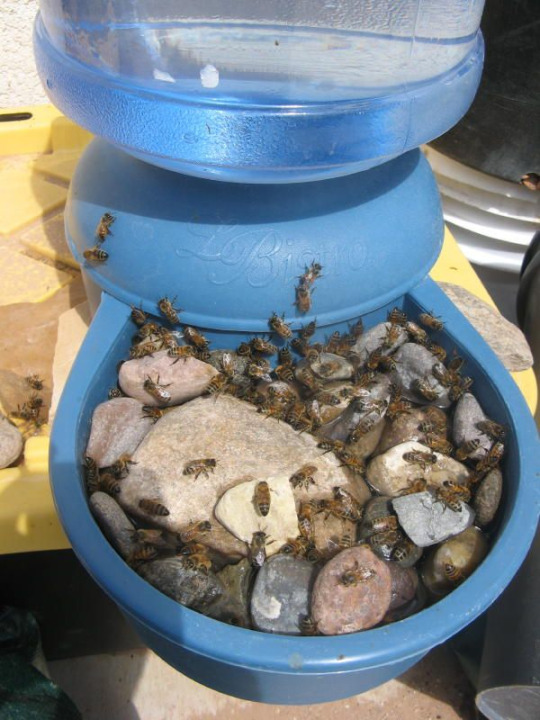
Oftentimes when I see ‘add a water source’ in informational articles about improving your backyard for wildlife, it’s almost always followed by an image of a gorgeous backyard pond with a waterfall and rock lining that looks expensive to set up, difficult to maintain, and overall just… not feasible for me. Arguably, not feasible for a lot of people. And that’s okay! There’s still ways to add water in your garden for all kinds of creatures to enjoy!
There’s tons of ways to create watering stations for insects like bees and butterflies. A self refilling dog bowl can work wonders! Add some stones into the receiving tray for insects to land on or use to climb out, and you’ve got a wonderful drinking spot for all kinds of insects! You can also fill a saucer or other dish with small stones and fill it, though it’ll likely need refilling daily or even several times a day during hot times.
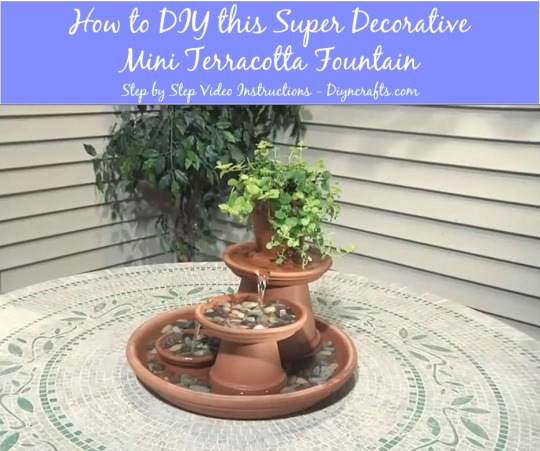
I've seen people online use all kinds of things to make water features. Some go with terra-cotta pots, pebbles, and a cheap pump to get a small and simple fountain. Others use old tires, clay, and a hole in the ground to create an in-ground mini pond system. If all else fails, even a bucket or watertight box with a few plants in it can do the trick--though do be wary of mosquitoes if the water isn’t moving. In situations like these, a solar-powered fountain pump or bubbler are great for keeping the water moving while still making it a drinking option for wildlife (it not even more appealing for some)--and these items can be obtained fairly cheap online!

Bird baths are an option as well--a classic way to provide for birds in your area, they can be easy to find online or in a gardening store! The only downside is that a good, quality bird bath can be pricey up-front. However, a nice stone bird bath should last a long time, be easy to clean and refill, and be enjoyed by many birds! I’ve also seen tutorials on how to make your own with quickcrete! Bird baths will be a welcome sight to birds, as they provide a space for them to drink and bathe to regulate the oils in their feathers for flight and insulation. Putting a stone in the middle will also help insects to escape if they fall in, and provide a place to perch so they can get their own drink. You’ll want to change the water and clean the baths regularly--as often as once a week, if you can manage it.
If possible, it’s highly encouraged to fill and refill water features with rainwater instead of tap water. Tap water is often treated, so instead of using hoses or indoor kitchen water, collecting some rainwater is a great alternative. Collecting rainwater can be as simple as leaving cups, bins, or pots outside for awhile.
Butterflies and other creatures will also drink from mud puddles. If you can maintain an area of damp soil mixed with a small amount of salt or wood ash, this can be fantastic for them! Some plants also excel at storing water within their leaves and flowers (bromeliads come to mind), making them an excellent habitat for amphibians as well as a drinking spot for insects and birds.
Bird Feeders and Bird Houses

Some of the fancy, decorated bird feeders are expensive, but others can be pretty low-cost--I got my bird feeder from Lowe’s for around 10 dollars, and a big bag of birdseed was around another 10 dollars and has lasted several refills! If you don’t mind occasionally buying more birdseed, a single birdfeeder can do a lot to attract and support local birds! If you’re handy, have some spare wood, and have or can borrow some tools, you may even be able to find instructions online to make your own feeder. You may not even need wood to do so! Even hummingbird feeders, I’ve found, are quick to attract them, as long as you keep them stocked up on fresh sugar water in the spring and summer!
An important note with bird feeders is that you have to make sure you can clean them regularly. Otherwise, they may become a vector for disease, and we want to avoid causing harm whenever possible. Also keep an ear out and track if there’s known outbreaks of bird diseases in your area. If local birding societies and scientists are advising you take your birdfeeders down for awhile, by all means, do it!
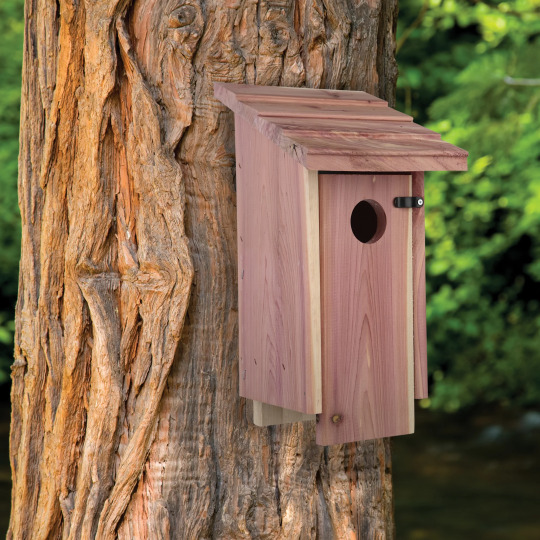
Bird houses are naturally paired with bird feeders as biodiversity promoters for backyard spaces, and it makes sense. Having bird houses suited to birds in your area promotes them to breed, raise their young, disperse seeds, and generally engage in your surrounding environment. Setting them up takes careful selection or construction, preparation, and some patience, but sooner or later you might get some little homemakers! Keep in mind, you will need to clean your birdhouses at least once a year (if not once per brood) to make sure they’re ready and safe for birds year after year--you wouldn’t want to promote disease and parasites, after all. But they could be a valuable option for your landscape, whether you purchase one or construct your own!
Again, do make sure you're putting up the right kind of boxes for the right kinds of birds. Bluebird boxes are some I see sold most commonly, but in my area I believe they're not even all that common--a nesting box for cardinals or chickadees would be far more likely to see success here! And some birds don't even nest in boxes--robins and some other birds are more likely to use a nesting shelf, instead! Research what birds live in your area, take note of any you see around already, and pick a few target species to make homes for!
Solitary Bee Houses
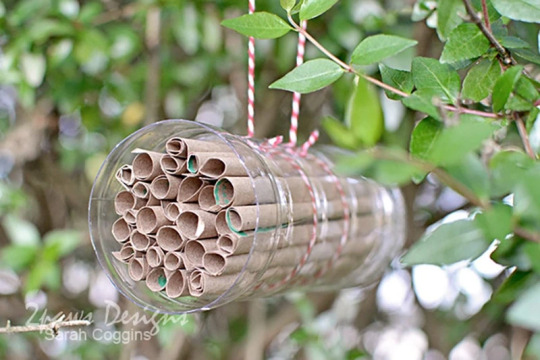
A bee house or bee hotel is a fantastic way to support the solitary bees in your area! For a few dollars and some annual cleaning, you can buy a solitary bee house from most big box nurseries. Alternatively, you can make one at home, with an array of materials you may already have lying around! You can even make them so that they’ll benefit all kinds of insects, and not necessarily just bees.
Though you don’t even necessarily have to break out the hammer and nails, buy a ton of bricks, or borrow a staple gun. Making homes for tunneling bees can be as simple as drilling holes in a log and erecting it, or drilling holes in stumps and dead trees on your property. You might even attract some woodpeckers by doing this!
Providing Nesting Area
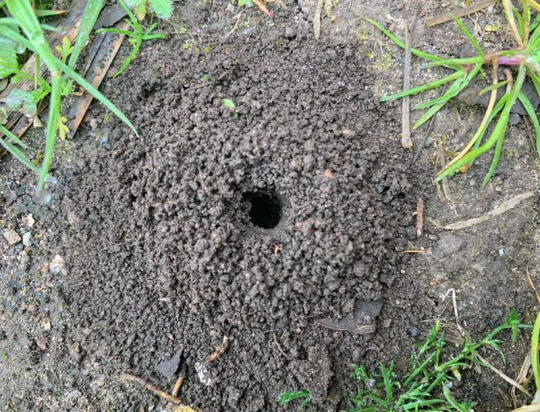
There are tons of different kinds of bees, and they all make different kinds of homes for themselves. Not all of them make big cavity hives like honey bees, or will utilize a solitary bee house. Bumblebees live in social hives underground, particularly in abandoned holes made by rodents--some others nest in abandoned bird nests, or cavities like hollow logs, spaces between rocks, compost piles, or unoccupied birdhouses. Borer, Ground, and Miner bees dig into bare, dry soil to create their nests. Sparsely-vegetated patches of soil in well-drained areas are great places to find them making their nests, so providing a similar habitat somewhere in the garden can encourage them to come! I do talk later in this document about mulching bare soil in a garden--however, leaving soil in sunny areas and south-facing slopes bare provides optimal ground nesting habitat. Some species prefer to nest at the base of plants, or loose sandy soil, or smooth-packed and flat bare ground. They’ve also been known to take advantage of soil piles, knocked over tree roots, wheel ruts in farm roads, baseball diamonds and golf course sand traps. You can create nesting ground by digging ditches or creating nesting mounds in well-drained, open, sunny areas with sandy or silty soil. However, artificially constructed ground nests may only have limited success.
Providing Alternative Pollinator Foods
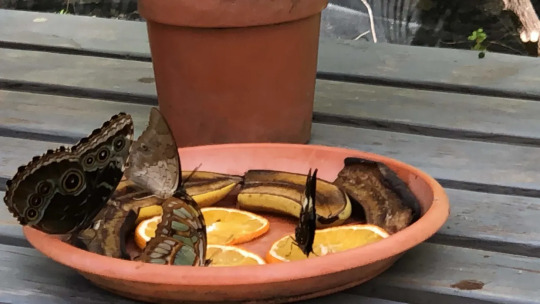
Nectar and pollen aren’t the only foods sought out by some pollinators! Some species of butterflies are known to flock to overripe fruit or honey water, so setting these out can be an excellent way to provide food to wildlife. You may want to be cautious about how you set these out, otherwise it can help other wildlife, like ants or raccoons. Butterflies may also drop by to visit a sponge in a dish of lightly salted water.
Bat Houses and Boxes
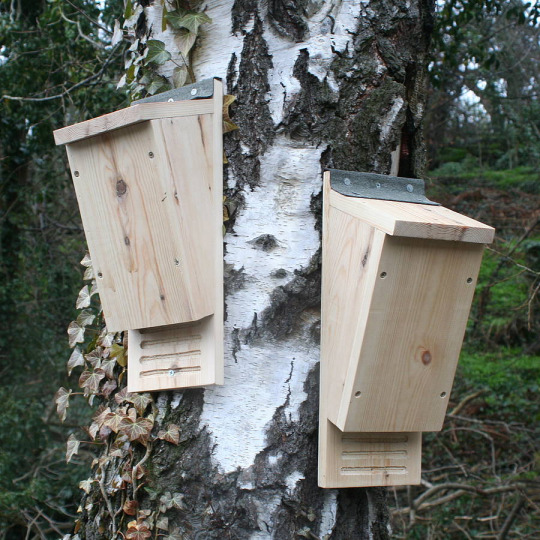
Big or small, whether they support five bats or five hundred, making bat boxes and supporting local bats is a great way to boost biodiversity! Not only will they eat mosquitoes and other pest species, but you may also be able to use the guano (bat droppings) as fertilizer! Do be careful if you choose to do that though--I’ve never had the opportunity to, so do some research into how strong it is and use it accordingly.
Provide Passageway Points
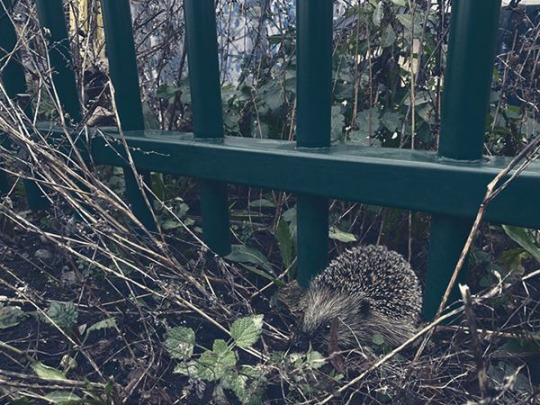
If you want your area to be more accessible for creatures that can’t fly or climb fences, allowing or creating access points can be an excellent way to give them a way in and out. Holes in the bottom of walls or fences can be sheltered with plants to allow animals through.
In a somewhat similar manner, if you’re adding a water fixture, it’s important to provide animals a way to get into and out of the pond--no way in, and they can’t use the water. No way out, and they may drown. Creating a naturalistic ramp out of wood beams or sticks, or stepped platforms out of bricks, stones, or logs can do the trick.
Get or Keep Logs and Brush Piles

I’ve already mentioned logs a good handful of times so far in this post. To be used as access ramps, or as nesting areas for solitary bees. But they have value as much more than that! Logs on the ground provide shelter for all kinds of animals, especially depending on size--anything from mice, reptiles, and amphibians to things like turkey vultures and bears will use fallen logs as shelter. Inside of a decaying log, there’s a lot of humidity, so amphibians are big fans of them--meanwhile, the upper sides of them can be used as sunning platforms by things like lizards. Other animals can also use the insides of logs as nest sites and hiding places from predators too big to fit inside. Fungi, spiders, beetles, termites, ants, grubs, worms, snails, slugs, and likely much more can be found inside rotting logs, using the rotting wood as food sources or nesting places. They can then provide food for mammals, amphibians, reptiles, and birds. They can also be regarded as a landmark or territory marker as wildlife get more familiar with your space.
So how do you get logs for cheap? Try Chip Drop! I talk about them more in a future post, but you can mark saying that you’d like logs in your drop, so they’ll give you any they have! In fact, you may even get a drop faster if you're willing to accept some logs. You may also be able to approach arborists you see working in your area and ask for logs. There may also be local online listings for people selling logs for cheap, or just trying to get rid of them. If there’s land development going on near you, you may be able to snag logs from trees they cut down to make space. Do keep in mind, you don’t need to have huge gigantic logs laying around your property to make an impact--even small logs can help a lot.
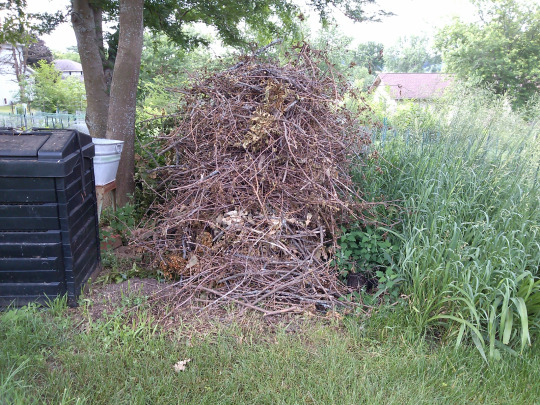
If possible, creating and leaving brush piles on the edge of your property can be a great boost to biodiversity--even if you may not see the wildlife using it. They’ll provide shelter from weather and predators, and lower portions are cool and shady for creatures to avoid the hot sun. The upper layers can be used as perch sites and nest sites for song birds, while lower layers are resting sites for amphibians and reptiles, and escape sites for many mammals. As the material decays, they also attract insects, and as such they’ll attract insect-eating animals too. As more small animals find refuse in your brush pile, their predators will be attracted to them as well. Owls, hawks, foxes, and coyotes are known to visit brush piles to hunt. Making a brush pile can be as simple as piling branches and leaves into a mound, as big or as small as you want. You can even use tree stumps or old fence posts near the base, and keep stacking on plant trimmings and fallen branches. Do note that you don’t want to do this near anything like a fire pit.
Don't forget, with all of these, your mileage may vary for any variation of reasons, so don't worry if you can't take all of even any of these actions! Even just talking about them with other people may inspire someone else to put out a bat box, or leave a few logs out for wildlife!
That's the end of this post! My next post is gonna be about ways to get seeds and plants as cheaply as possible. For now, I hope this advice helps! Feel free to reply with any questions, success stories, or anything you think I may have forgotten to add in!
#biodiversity#solarpunk#environmental stewardship#gardening#outdoor gardening#(i know this is literally the Dont Gotta Garden post but these could also be excellent additions to a preexisting garden so)#ani rambles#out of queue#the biodiversity saga#here in the tags to once again emphasize your mileage may vary with all of these#my mom is scared of bats theres no way in hell shes gonna let me put up a bat box#but I have been able to put out a shallow bird bath and a little solarpowered hummingbird bath fountain#do what you can! every bit counts! You may be able to do something that I or your neighbors can't!#for example my nextdoor neighbors have literally no trees in their backyard where the hell would they put a bat box#meanwhile i have trees in my backyard but still can't put up a bat box. maybe the neighbors next to me could!#similarly brush piles are a no go for my family but someone somewhere else could set one up!#i am rambling in the tags now uh long story short do what you can don't stress about what you can't
4K notes
·
View notes
Text
One thing that really infuriates me is authority figures underestimating children, and making decisions for them based on those extremely incorrect assumptions, which then fuck up the lives and futures of those kids.
He looked the kid who used all the abilities he has access to, to save the world, in the eye and told him he isn't good enough to multiclass. The kids that built a solar fucking death ray that saved his and everyone else's ungrateful asses from a chilly, icy tomb.
This fucking close minded meathead looked Gorgug, the boy that was raised by expert artificers and gnomes who taught him the value of a chill vibe, in the eye and told him that he's barely succeeding as barbarian because he doesn't rage the same way as everyone else. That same fucking child that cut down a tree literally constructed by a god, the rage he used to do that wasn't enough?
Gorgug is extremely powerful, very intelligent and more fucking capable than anyone I could even imagine to multiclass and he is being failed by a system that doesn't believe in anything that isn't conformity.
Gorgug is being let down and failed and it makes me fucking furious.
PS; I have once again made a reblog its own post because of how passionately I feel about it.
#lexi's diary#dimension 20#d20#d20 fantasy high#fantasy high junior year#fantasy high#fhjy#d20 fhjy#gorgug thistlespring
433 notes
·
View notes
Text
Sun child abilities


Sun children are radiant beings filled with the warmth and energy of sunlight. Their presence is uplifting and comforting. Known for their gentle strength and resilience, they bring light to dark places and hope to troubled hearts. They have two forms just like Moon children, one for solstices and the other for eclipses. Just like the sun, they are a source of life, warmth, and joy to everyone they meet.

Abilities
Solar healing - Sun children can heal themselves or others by channeling sunlight, accelerating recovery and restoring energy.
Solar energy absorption - users can absorb sunlight to boost their strength, speed, or energy, especially during the day.
Heat resistance - users are naturally resistant to heat, able to withstand extreme temperatures without harm.
Heat generation - users can raise their body temperature, providing warmth in cold environments or creating small bursts of heat to defend themselves.
Solar aura - users have a warm, golden aura that radiates around them, bringing comfort or calming those nearby.
Sunlit visions - users can receive visions or flashes of insight when exposed to sunlight, sometimes foreseeing events or gaining guidance.
Solar navigation - users instinctively know the time of day and direction based on the position of the sun, making them expert navigators.
Weather influence - users can part clouds or summon sunny weather for a short time, bringing brightness to overcast days.
Shape shifting - They have three forms and pass from one to another. They have a human, solstice and eclipse form.
Solar magic
Light manipulation

Characteristics
Golden or sunkissed skin
Light hair - natural golden or honey-like hues.
Bright eyes - often vibrant shades of amber, gold, or warm brown.
Golden sparkles in tears - When they cry, their tears might glimmer with a golden tint, like sunlight catching on water droplets. Their tears have a healing effect. (Rapunzel vibes)
Freckles or sunspots, rosy cheeks
Comforting presence
Slightly warmer touch
Aura of light - In darkness or at dusk, they may emit a faint glow.Their shadows sometimes carry a hint of gold or light, rather than pure darkness.
Energized by sunlight
Golden fingertips - slightly tinted with a gold or amber hue, especially when using their powers.
Golden veins or patterns - Some may have faint golden patterns or veins visible under their skin, like lines of sunlight just beneath the surface.
Solstice form:



Eclipse form:



@shiftingwithmars thank you for answering to the post, it helped a lot ❤️
#shiftblr#reality shifting#desired reality#shifting community#reality shift#shifting#shifting realities
76 notes
·
View notes
Text
The Best News of Last Week
⚡ - Goodbye Fossil Fuels, Hello Renewables: The Energizing News You Need
1. Fungi discovered that can eat plastic in just 140 days

Australian scientists have successfully used backyard mould to break down one of the world's most stubborn plastics — a discovery they hope could ease the burden of the global recycling crisis within years.
It took 90 days for the fungi to degrade 27 per cent of the plastic tested, and about 140 days to completely break it down, after the samples were exposed to ultraviolet rays or heat. We really see a solution within five years, according to environmental scientist Paul Harvey, an expert on global plastic pollution.
2. Topeka Zoo welcomes new African Lion as female sprouts mane
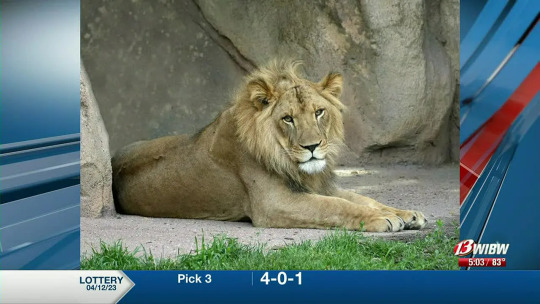
The Topeka Zoo has welcomed a new African Lion to its pride, a male, as one of its females started to sprout a mane following the 2021 passing of the pride’s last male.
The Topeka Zoo and Conservation Center announced on Thursday, April 13, that Tatu, a 4-year-old African Lion, has arrived in the Capital City. He comes to Topeka from the Denver Zoo and his arrival marks a time of growth for the zoo.
3. This barber opens his shop on his day off for children with special needs – and all of their haircuts are free

On his day off, Vernon Jackson still goes to work, opening up his Cincinnati barber shop, Noble Barber and Beauty, for VIP clients: children with special needs.
It's something he's done since 2021. "I was hearing so many horror stories that parents were going through with other barber shops and just the barbers or stylists having no patience with their child," Jackson told CBS News. "So I figured I would compromise by coming in on my day off so there were there would be no other barbers or stylists in the shop and I could give them the full attention that they need."
4. Renewables break energy records signalling ‘end of the fossil age’

Experts are calling time on the fossil age as new analysis shows wind and solar power produced a record amount of the world’s electricity last year.
The renewables generated 12 per cent of global electricity in 2022, up from 10 per cent the previous year, according to the report from clean energy think tank Ember. Last year, solar was the fastest-growing source of electricity for the 18th year in a row, rising by 24 per cent from 2021.
5. New nuclear medicine therapy cures human non-hodgkin lymphoma in preclinical model

A new nuclear medicine therapy can cure human non-Hodgkin lymphoma in an animal model A single dose of the radioimmunotherapy, was found to quickly eliminate tumour cells and extend the life of mice injected with cancerous cells for more than 221 days (the trial endpoint), compared to fewer than 60 days for other treatments and just 19 days in untreated control mice.
To explain it in simple terms because this is so freaking cool: There is a radioactive atom attached to a drug. The target cell eats the drug and the energy coming off of the radioactive atom kills the target cell
6. Colorado passes first US right to repair legislation for farmers

Colorado farmers will be able to legally fix their own equipment next year, with manufacturers including Deere & Co obliged to provide them with manuals for diagnostic software and other aids, under a measure passed by legislators in the first U.S. state to approve such a law.
Equipment makers have generally required customers to use their authorized dealers for repairs to machines such as combines and tractors.
7. When a softball player falls after hitting a grand slam, this is how her opponents reacted
youtube
----
That's it for this week :)
This newsletter will always be free. If you liked this post you can support me with a small kofi donation:
Buy me a coffee ❤️
Also don’t forget to reblog
1K notes
·
View notes
Text

Prepare Now! They Are Preparing For Something MASSIVE!
Act now before it’s too late! The New Madrid fault line is primed for a disaster, and the 2024 earthquake drills are just the tip of the iceberg. Experts are sounding the alarm—massive seismic destruction could hit any moment, and you need to be ready.
The Warning Signs Are Clear
The intense earthquake drills in St. Louis aren’t routine. They're ramping up for something bigger. Why now? What do they know that you don’t? In 2024, a surge of simulations and drills have sparked concerns, raising questions about what’s brewing beneath us. The New Madrid fault line isn’t just another earthquake zone—it's a ticking time bomb.
This Fault Line Has a Dark History
The New Madrid fault, which stretches across Missouri, Arkansas, and more, has unleashed some of the most violent quakes in U.S. history. In the early 1800s, it literally reversed the flow of the Mississippi River and tore the land apart. Experts believe another catastrophe is looming, and the signs are impossible to ignore.
Since the April solar eclipse, strange phenomena have emerged—rare comets, bizarre animal behavior, and unexplained sky events. These occurrences are eerily similar to what happened before the massive quakes of the 19th century. Coincidence? Or a warning?
The Drills Are Escalating—But Is It Just Preparation?
2024 has seen unprecedented drills, simulating catastrophes on a scale we haven’t seen before. The National Guard isn't simulating small events—they're preparing for an 8.4 magnitude earthquake. The frequency and intensity of these exercises are off the charts. Missouri’s earthquake program manager, Jeff Briggs, keeps warning: the New Madrid fault is a real, catastrophic threat.
From January to March 2024, seismic activity in the New Madrid zone skyrocketed, with 63 quakes recorded. Experts argue over whether these smaller tremors are relieving pressure or building toward something massive. The truth is, no one knows when it will strike—but you don’t want to be caught unprepared.
Is the Media Downplaying the Real Threat?
While drills and preparations are ramping up, media coverage seems minimal. Is the gravity of the situation getting through to the public? If the experts and government are preparing for the worst, why aren't you? These drills aren’t just exercises—they’re warnings.
When the Big One Hits
The last time the New Madrid fault erupted, it was catastrophic. Tens of thousands could die in a modern repeat. FEMA and the University of Kentucky predict unimaginable damage: millions left without power, utilities destroyed, and entire regions isolated from clean water for months.
The experts have spoken—the question is, are you ready?
It's Not Just a Drill—The Time to Act Is NOW
The escalating drills, strange natural events, and seismic activity all point to one thing: the New Madrid fault is ready to blow. This isn’t just another disaster drill. It’s a ticking clock.
The time to act is now. Get informed, get prepared, and don’t underestimate the threat. The ground could shake at any moment, and when it does, the consequences will be dire. Prepare now—before it’s too late. 🤔
#pay attention#educate yourselves#educate yourself#knowledge is power#reeducate yourselves#reeducate yourself#think about it#think for yourselves#think for yourself#do your homework#do some research#do your research#do your own research#ask yourself questions#question everything#news#real or fake#you decide#be ready#be prepared
95 notes
·
View notes
Text
Solar Power Systems - Why Choose Ads Solar?
Sydney has one of the highest rooftop solar penetration rates in Australia. If you choose a good installer, you can reduce your electricity bills and even make money by selling excess energy to the grid.
Look for a quality product with an extended warranty and a reputable company. Also, check whether the components (panels, inverter and battery) are CEC approved.
Space Solar
Creating an era-defining new Solar energy Sydney source from space that can scale to Net Zero and provide global energy security.
The increasing need for new energy sources that can reliably replace fossil fuels has led to a flood of proposals to build large solar farms on Earth. But these projects are constrained by limited land availability and the need to connect them to existing grids.
A satellite-based power station could solve these problems by concentrating sunlight on separate power-generating modules, which would then send the electricity back to Earth. But such a system has to operate in geostationary orbit, which is difficult for current satellites, and the solar panels must be resistant to the radiation that can damage them.
Researchers are working on both of these challenges. One recent development is a self-healing solar cell that can recover from radiation damage at normal operating temperatures. Another is a satellite design that uses modular, repeatable building blocks to reduce the cost of manufacturing.
Sun Max Solar
Solar power systems Sydney is a clean, renewable energy source that can help you reduce your dependence on the grid and lower your electricity bills. Solar electricity can also minimise carbon emissions by using the sun to generate energy. In addition, it can qualify you for tax rebates that are available to help offset the cost of a solar system.
Featuring top-tier solar systems that maximize energy output and diminish unnecessary power expenses, Sun Max Solar offers innovative solutions that blend functionality with aesthetics. Their products are backed by leading Australian product and performance warranties, which ensures quality and long-term reliability.
Customers laude the company’s seamless professionalism, from the non-pushy attitude of their representatives to their prompt communication and insightful answers. One client even commended the installation team’s courteousness and efficiency. The company prioritizes transparency and sustainability, making it a definite choice for those looking for a solar power system in Sydney.
Captain Green Solar
Captain Green Solar is a leading Australian solar power, battery and storage company that has been operating since 2010. It is highly reputable with strong client testimonials, quality assurance, value for money and industry endorsement.
The company specializes in designing and installing residential and commercial solar energy systems for their customers. Its team of certified installers and engineers are trained to help clients choose the right solution for their homes. The company also provides maintenance and monitoring services for solar systems.
Located in Western Sydney, Captain Green Local solar experts in Sydney offers a full range of solar services.
They offer residential solar power, solar hot water, solar batteries and LED lighting. They also provide a 10-year warranty on their products. Its service area includes
Castle Hill, Northern Beaches, and Wollongong. Customers can expect to save up to 30% on their electricity bills. They can also enjoy free solar installation and a tenyear solar guarantee. This guarantees that their solar system will produce enough electricity to cover their daily consumption and offset the cost of grid power.
ADS Solar
With a solar panel installation from Ads Solar, you can generate clean energy at your home. Besides saving money on electricity bills, it also reduces your carbon footprint. It can also increase your property value. The company’s experienced team can help you make the switch to solar power.
After your consultation, the company will design a system based on your energy needs. Then, they’ll perform a thorough inspection and testing before activating the system. They partner with the best solar panel manufacturers to ensure high-quality products and optimal performance.
Founded in 2009, ADS Solar offers cost-effective and high-quality energy solutions that will reduce your power costs. Their team of experts is committed to delivering a premium quality system that will save you money and provide peace of mind.
#Solar power systems Sydney#Renewable energy Sydney#Solar energy Sydney#Local solar experts in Sydney
0 notes
Text

Sunrise as he appears in my TSAMS Celestial Phenomena AU. Mind the ratings.
The OG Sun, the original playtime model, who's been there since the beginning and has seen literally everything. Is the boss, but doesn't know it. Expert in wheeze-laughing, surviving unsurvivable peril, and inexplicably adept with handheld weaponry. Clawless for childminding health and safety purposes. Dabbles in star power. In love with Solar.
Custom rays were a gift from Solar.
Celestial Phenomena is a series mostly from Solar's POV, detailing adventures and catastrophes from the light-hearted to peril and plot. Please enjoy.
#tsams celestial phenomena#sun and moon show#the sun and moon show#tsams sun#tsams au#character reference
55 notes
·
View notes
Text
had an idea for a metalocalypse episode called sustainabilityklok where a solar power company wants to sponsor dethklok and they're all like no way clean energy is for pussies and then charles is like now hold on isn't it metal to harness the raw power of the sun plus they're offering you a [guitar riff]ton of money for this sponsorship so then nathan is like maybe clean energy *is* metal actually and then murderface is like well i think it's metal to hate the planet and try to kill it so he starts using as much plastic as possible and disposing of it improperly to kill all the turtles and seagulls and dolphins. and then pickles decides that he wants to try getting high by smoking plastic but he accidentally gets toki super high and he has visions of sea turtles and seagulls and dolphins that sing with him. also skwisgaar starts using reusable condoms to be sustainable. then it cuts to the tribunal and stampingston is like gentlemen dethklok is starting to get into sustainable energy... here to tell us more is solar power expert dr. reginald jackoffonabagel- dr. jackoffonabagel? and then he'll say if dethklok gets their fans to start using clean energy then no one will need oil anymore and there won't be any funding left for the US military. so crozier says we should kill them before they do that but saletsia says wait... we must watch... and then dethklok has a big concert sponsored by the solar power company but the solar panels short out and blast all the fans with a sun laser and then the power goes out and nathan's like this SUUUCKS and they all decide to stop using solar power
125 notes
·
View notes
Text
ARE WE SAFE FROM BLACK HOLES??
Blog#419
Wednesday, July 17th, 2024.
Welcome back,
Astronomers have discovered a black hole coming towards Earth. Before you get too alarmed, just know that we aren’t actually in danger — however, that doesn’t make the news any less unsettling.
Instead of freaking out, we can learn more about what it even means to have a black hole in space and how it affects us (or why it doesn’t).
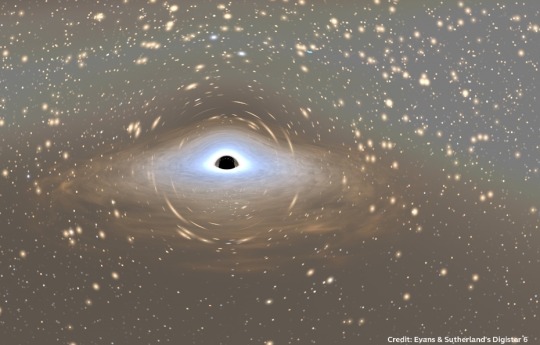
For the majority of us, most of our ideas about black holes originate from sci-fi movies or books. It’s not very typical to know everything there is to know about the mysterious phenomena — in fact, even scientists still have a lot to uncover.
Nothing can escape a black hole. Its gravitational pull is so strong that even the brightest of light can’t survive, which is exactly how the interesting spectacle earned its name, according to NASA.

When in space, it’s said that these black holes form when a large star collapses and its life comes to an end. Most of the time, scientists can’t even see them, despite the fact that millions (literally) exist.
However, when astronomers decided to borrow a few techniques from exoplanet hunters, they ended up making a huge discovery. After observing shifting light frequencies — a sign that there’s gravity nearby from an invisible companion — they found a black hole incredibly close to Earth, according to Science.

This invisible force had a mass that was four times larger than the sun, which ruled out any idea that it was a star. To confirm that this area was in fact a black hole, the astronomers had to find a star that was orbiting something invisible, which is exactly what they found.
Its closeness — only 1,000 light years away — offers scientists the opportunity to learn more about binary systems and how they function.
So, a large black hole is facing Earth and nothing can escape it. Those two facts together might sound a little bit scary, but there’s actually nothing to worry about.
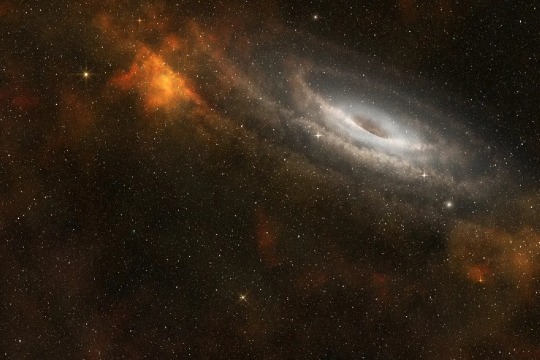
As mentioned earlier, there are millions of black holes out there, and they don’t just run around swallowing worlds. “They follow the laws of gravity just like other objects in space. The orbit of a black hole would have to be very close to the solar system to affect Earth, which is not likely,” NASA explained.
Even the most massive black holes that are directly facing Earth aren’t a threat, even though they are much larger than the sun and extremely powerful. An expert in the field — an astrophysicist and black hole researcher — even told Mashable that humans are “unbelievably safe” from these black holes.

We aren’t in any danger, luckily, but black holes could still affect us in a different, perhaps unexpected, way. Elizabeth Landau, a senior storyteller for NASA’s Jet Propulsion Laboratory, told The Independent that the merging of these black holes and stellar explosions could cause new solar systems and stars to form.
Originally published on https://www.greenmatters.com
COMING UP!!
(Saturday, July 20th, 2024)
"IS THERE WATER FLOATING IN SPACE??"
#astronomy#outer space#alternate universe#astrophysics#universe#spacecraft#white universe#space#parallel universe#astrophotography
81 notes
·
View notes